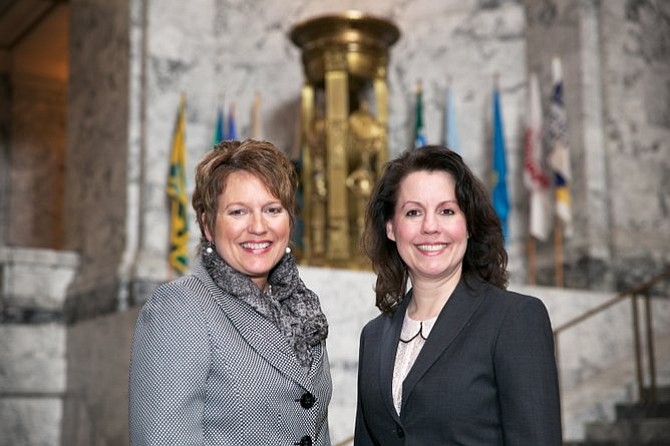A trio of Southwest Washington lawmakers are floating a new plan for an Interstate 5 span between Vancouver and Portland they say could alleviate congestion at a much lower cost than the failed Columbia River Crossing project.
State Rep. Liz Pike, R-Camas, detailed the proposal in a memorandum emailed to dozens of other lawmakers and local officials this week. She dubbed the idea the “I-5 Practical Design Fly-over” and said it could be built for $1 billion to $1.5 billion. In an interview, Pike cautioned that the idea is just that — an idea, not a concrete plan.
“This is one option,” she said. “I’m certainly open to listening to other ideas.”
The concept goes something like this: Build an extended “fly-over” bridge roughly from Mill Plain Boulevard to the vicinity of the Portland Meadows racetrack in North Portland, bypassing the most problematic interchanges near the Washington-Oregon state line. The existing Interstate 5 Bridge would be left in place for local traffic between downtown Vancouver and North Portland, including Hayden Island. The concept does not include light rail.
In her email, Pike said she, Sen. Ann Rivers, R-La Center, and Rep. Lynda Wilson, R-Vancouver, have worked to advance the idea. It was developed by Dave Nelson, a retired engineer in Vancouver who says he worked on his own time.
The concept has already drawn a skeptical response from at least one lawmaker who was a strong supporter of the CRC. Sen. Annette Cleveland, D-Vancouver, said leaders should build off the work that culminated in the $3 billion megaproject that would have replaced the I-5 Bridge while rebuilding freeway interchanges and extending light rail into Vancouver. Walking away from those efforts means “we go back to square one,” she said.
The CRC shut down almost a year ago without any funding from either state. The project was also removed from the Federal Transit Administration’s “current projects” list, meaning it’s no longer in line for federal funding. Still, Cleveland dismissed the notion that she’s struggling to “let go” of the CRC.
“That’s certainly not the case,” Cleveland said. “I’ve been advocating for us to look forward, not back.”
The fly-over concept is at least the second alternate cross-river proposal to find favor among some CRC opponents recently, along with a proposed east county bridge at Southeast 192nd Avenue. (Other advocates have in the past backed the idea of a third bridge across the Columbia River located west of I-5.)
Early details
Pike’s email to her legislative colleagues offered some specifics on the preliminary fly-over concept. Pike said the new bridge would be aligned slightly upstream of the existing I-5 Bridge. It could be financed without tolls, she said. But Pike also wrote that the new span would offer 110 feet of clearance over the river — less than the 116-foot clearance of the CRC, which was roundly criticized as too low.
The CRC’s design forced the two states to sign agreements to pay three upriver manufacturers tens of millions of dollars as compensation because their largest products wouldn’t fit under the bridge. But that money was never paid out after the project died.
Nelson, the retired engineer, said the new concept could be designed to a higher clearance if needed.
Nelson said he believes the CRC was never a reasonable solution in part because of its complex design and a finance plan that relied heavily on tolling. The fly-over idea is a concept that has worked in other places around the world, he said.
“We need a simple, practical solution,” Nelson said.
Whether the new concept can gain significant traction in one or both states is a major question. Oregon leaders have shown little interest in alternative bridge proposals since the demise of the CRC. As for financing, the Washington Senate recently passed a $15 billion transportation funding package that delivers relatively little to Southwest Washington and includes nothing for the I-5 Bridge. If the package wins final approval this year, another one may not come around again any time soon.
Cleveland was among those who voted against the transportation package in the Senate. She cited the lack of any plan for the I-5 Bridge as the reason.
“I cannot tolerate that, given that we have such dire transportation needs right in our own community,” Cleveland said this week.
Most people in Clark County have moved past the CRC, Pike said. Any new project is bound to generate some controversy, she added, but the conversation needs to happen. And most agree that something needs to be done to improve the I-5 corridor, she said.
“It has to start somewhere,” Pike said.




